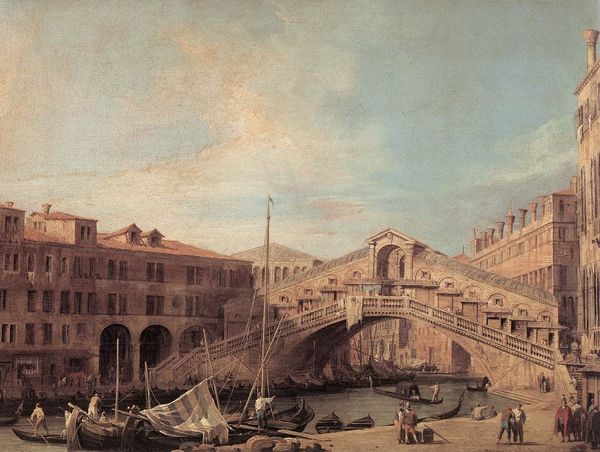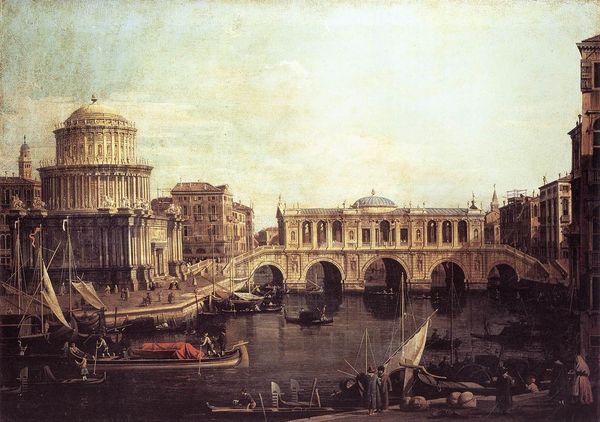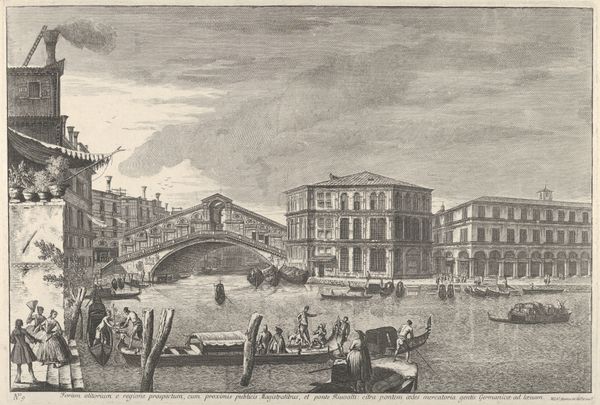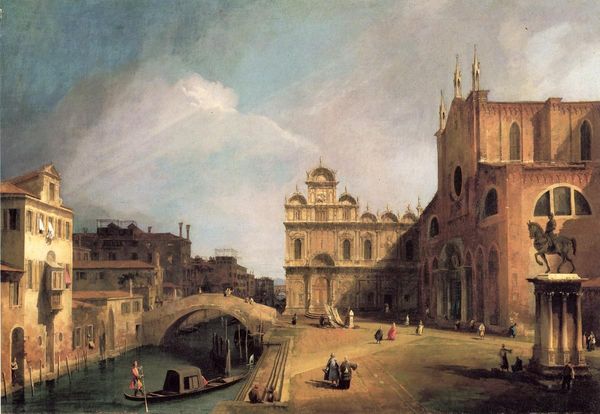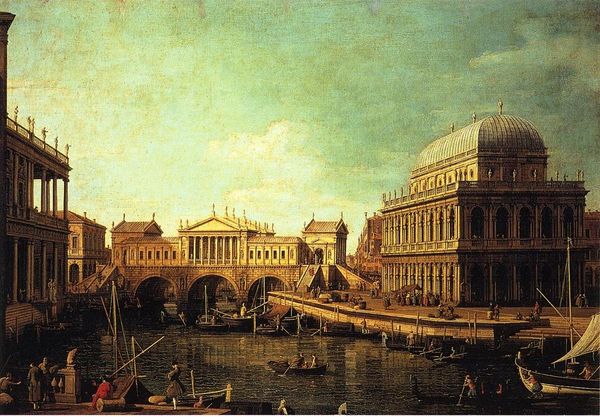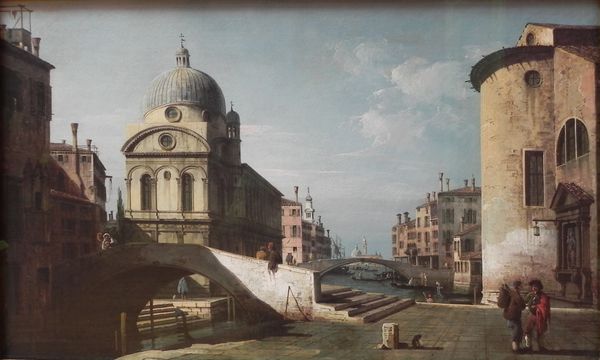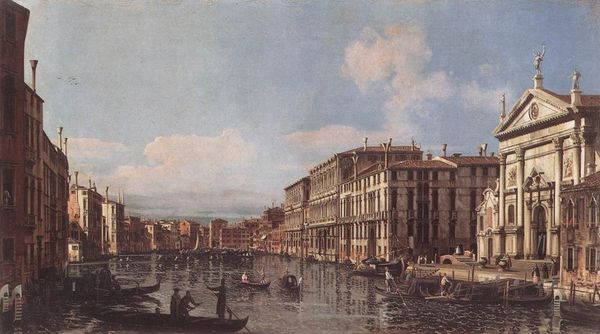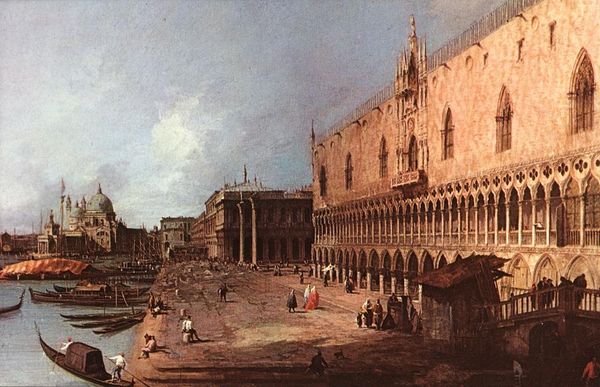
painting, oil-paint, sculpture, architecture
#
venetian-painting
#
baroque
#
painting
#
oil-paint
#
sculpture
#
landscape
#
perspective
#
oil painting
#
sculpture
#
arch
#
cityscape
#
history-painting
#
architecture
#
realism
Dimensions: 84.5 x 129.5 cm
Copyright: Public domain
Editor: So, this is Canaletto's "Capriccio: The Ponte della Pescaria and Buildings on the Quay," painted in 1743, using oil. It's quite architectural, almost like a stage set. What do you see when you look at this piece? Curator: I find the artist's manipulation of perspective intriguing. Notice how the buildings, though rendered with meticulous detail, appear slightly compressed, almost flattened. The effect directs the viewer’s gaze along very specific, intentionally arranged lines. Editor: Compressed? It looked pretty realistic to me at first glance. Curator: Consider the placement of the figures atop the bridge. They serve as repoussoir elements, guiding the eye into the constructed depth of the composition. The geometry of the bridge and the arrangement of architectural volumes create a deliberate, almost mathematical, structuring of space. The realism, therefore, is a construct itself, a game of forms and planes. Observe the cool, subdued palette and the brushwork... Editor: Yes, the limited color palette is striking. Curator: Indeed. And does this visual restraint serve a purpose in your opinion? How might this reduction affect the semiotic reading of the forms at play here? Editor: I guess it makes the architectural details stand out more and enhances the composition and shapes. It’s not really about a specific location; it’s more about how Canaletto uses the familiar forms to experiment. Curator: Precisely! The formal elements are elevated. By stripping away the complexities of natural light and local colour, Canaletto directs us to appreciate the painting as a study of architectural forms, spatial relations, and perspectival play. Editor: That’s a very interesting perspective, looking past the scenery and appreciating it as a study of pure form and composition. Thanks! Curator: My pleasure.
Comments
No comments
Be the first to comment and join the conversation on the ultimate creative platform.
